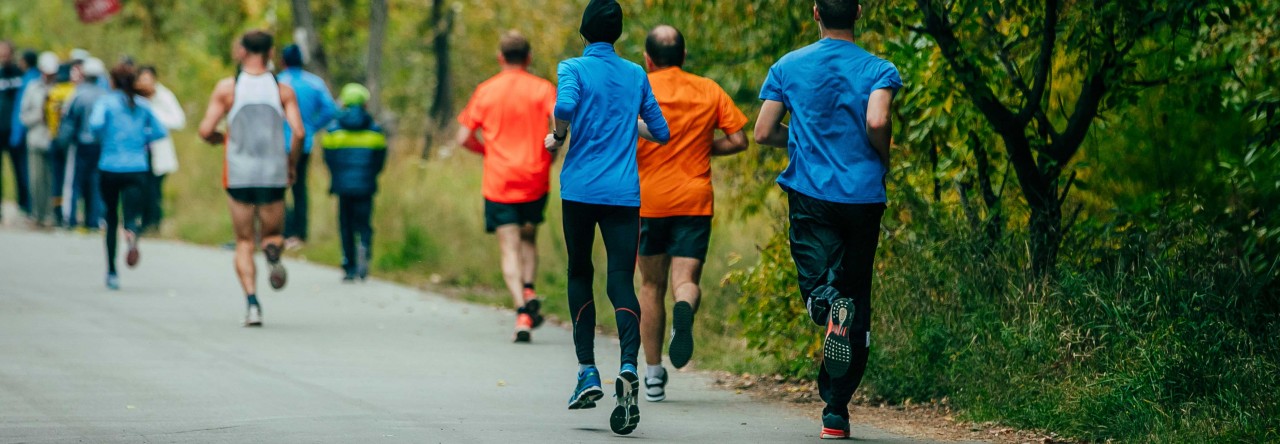What is vertical oscillation?
In running, vertical oscillation, or VO for short, is the distance the centre of body mass travels vertically (up and down) at each stride. The downwards VO is equal to and is a consequence of the upwards VO.
Is vertical oscillation good or bad?
Excessive VO is bad for sure however very low VO or zero VO (if possible, at all) are also signs of inefficient running technique. Excessive VO is a sign of pushing off the ground, and low VO is a sign of overstriding that usually comes with landing ahead of the body.
Essentially, VO is where the energy in our muscles convert into mechanical energy, and then released into forward movement. More details, if I can concise it into simple words as much as I can, it works as follows:
- VO upwards: when we load our body with potential mechanical energy by adjusting our height (using muscles, tendons releasing elastic energy, all going against gravity)
- VO downwards: when we rotate around the foot on the ground (source of propulsion), followed by landing (dipping down, tendons recoiling)
The bottom line is, to optimise vertical oscillation you must correct your running technique.
How bad is excessive vertical oscillation?
Over a long course of running, it is like climbing up a tall building in addition to running your running course.
For instance, if you run a [full] marathon (42.2km or 26 miles) in 4 hours at average cadence of 180 strides per minute, and you only have 1cm (0.393 inch) excessive VO, the total vertical distance you excessively climb up during the race is:
4 (hours) x 60 (minutes) * 180 (spm) * 0.01 (meter) = 432 meters or 1417.32 feet or 472.44 yards
It is pretty much like climbing up Steinway Tower in New York City as well as running your marathon race.
Which phase of VO is more expensive, upwards or downwards?
Upwards because going against the gravity is more costly; however, if you dip too low at every landing, you will have to go up a longer way to fall forward again :)
The [vertical] length of the downward phase is equal to and actually the consequence of the upwards one (and when I say upwards, I mainly mean going above your own height). When it is higher than what it should be, the runner has to deal with a greater force at landing due to falling from a higher height. It may not sound concerning at first, especially because the deviation from the optimum amount is about a centimetre or two, but the longer the running course the higher wasted energy and the higher chance of injury. That is why excessive VO is bad. It hurts both ways, up and down.
Does running cadence (strides per minute) affect vertical oscillation?
It does but it is a crucial point to understand that cadence is a by-product of running, not something to be actively involved with. For instance, the golden 180 spm might be achieved while there is still an excessive vertical oscillation.
When falling forward is the only source of propulsion at running, and there is no overstriding, the cadence automatically falls around 180 spm (proven by studies, because it highly depends on the natural frequency of tendons).
How to optimise vertical oscillation in running?
Correct running technique is the solution for optimising vertical oscillation. Excessive vertical oscillation is caused by excessive movements during each running stride, mainly by pushing off the ground which is very common amongst runners. Apart from recreational runners, there are even some elite runners who push off the ground without knowing about the inefficiency of doing so.
There are inefficient running techniques in which VO is minimised. For instance, reaching ahead of the body minimises vertical oscillation. This minimisation is not in your favour because it causes more issues like:
- Not using tendon elasticity: By not landing under the body (or close to the vertical line passing the centre of body mass), the runner does not benefit from elasticity of tendons by preserving the energy in them during landing. This energy is released in the next stride when we need to adjust our height to fall again, simply meaning saving energy or the so called efficiency.
- Chance of injury: Reaching ahead (over-striding + landing ahead of the body) exerts excessive pressure on knees and other body parts (some physiotherapists relate ITBS to over-striding).
How is vertical oscillation handled in Pose running?
As far as pushing off the ground, active landing, and over-striding are eliminated in Pose Method of Running, vertical oscillation is down to its minimal possible range, which is mostly based on the range of stretch of some tendons in our legs.
In Pose method, falling forward is the only source of propulsion. To be able to fall again after landing, we have to go back to the same height. Adjusting height is done unconsciously. A portion of this height adjustment is done by the release of energy preserved in our leg tendons. This simply means efficiency.

